Add-ons and services available for some purchases in cart
Protect your Purchase
White Glove Installation
Haul Away
Types of Refrigerators
A fridge is perhaps the most essential appliance for your home. From energy-efficient refrigerators to modern fridges with smart features, you’ll discover a huge selection of top-rated refrigerators at Conn’s HomePlus! What type of refrigerator is right for you? Here are five fridge designs to consider.
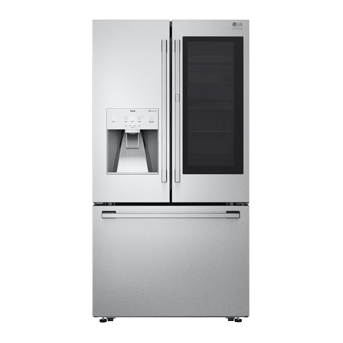
- French-door refrigerators are similar to side-by-side refrigerators, but have the freezer at the bottom. These high-capacity refrigerators make organization a breeze, often coming with adjustable shelves as well.
- Side-by-side refrigerators feature two vertical compartments, one for the fridge and the other for the freezer. These innovative refrigerators are well suited for families or spaces needing a slim fridge.
- Top-freezer refrigerators are the most common and affordable refrigerators for home use. They’re energy-efficient and have a spacious freezer on top, providing room for storage.
- Bottom-freezer refrigerators are designed to keep fresh items at eye level. However, the lower freezer also makes it easy to access frozen items. Great for those with kids!
- Compact refrigerators are perfect for smaller homes or apartments. These space-saving fridges offer the same features as a standard refrigerator. Plus, they’re energy-efficient and can fit into tight areas.
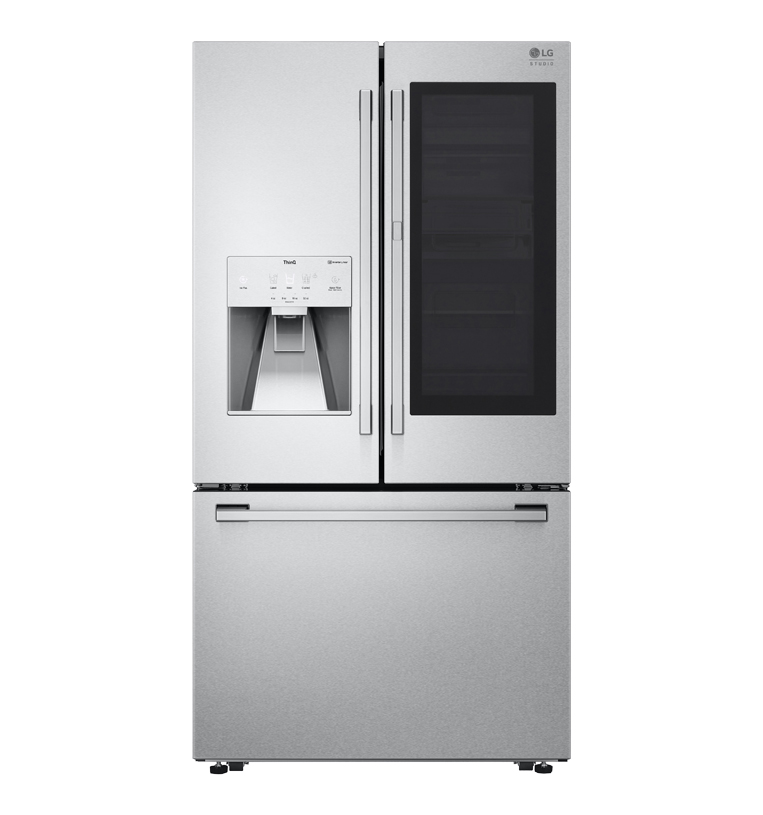
Features & Specifications
Every refrigerator is different. And because of how frequently you use your fridge, each detail impacts your daily life — from total size to number of shelves. So remember to think through the following features before buying your fridge.
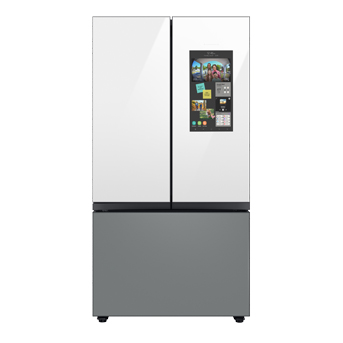
- Size and capacity. Conn’s HomePlus offers refrigerators as large as 42” wide with 30 cubic feet of space to mini fridges under 22” wide with 3.1 cubic feet of total interior room. When choosing a fridge, be sure to consider your family size, eating habits, and available space. Is there enough room for a standard fridge or should you opt for a counter-depth refrigerator? While a small refrigerator may not hold as much food, a large refrigerator will consume more energy.
- Energy efficiency ratings. Energy-efficient refrigerators can save you money on your electricity bills while reducing your carbon footprint. Look for a refrigerator with an Energy Star label, indicating that it meets energy efficiency standards.
- Defrost options. It’s important to prevent the build-up of ice crystals inside your fridge. That’s why we stock manual defrost fridges as well as frost-free and automatic defrost refrigerators. These save you time while keeping your fridge running smoothly.
- Temperature controls. Precise temperature controls mean your food stays fresher for longer. With fridges featuring digital temperature displays and adjustable temperature settings for multiple zones, you’re set for optimal food preservation.
- Shelving and storage options. The functionality of a refrigerator comes down to its design and your ability to customize that. From humidity‑controlled and full‑width drawers to door bins and spill-proof adjustable shelves, these details help maximize your storage space and organization. Conn’s HomePlus boasts practical, everyday options as well as luxury refrigerators with premium features.
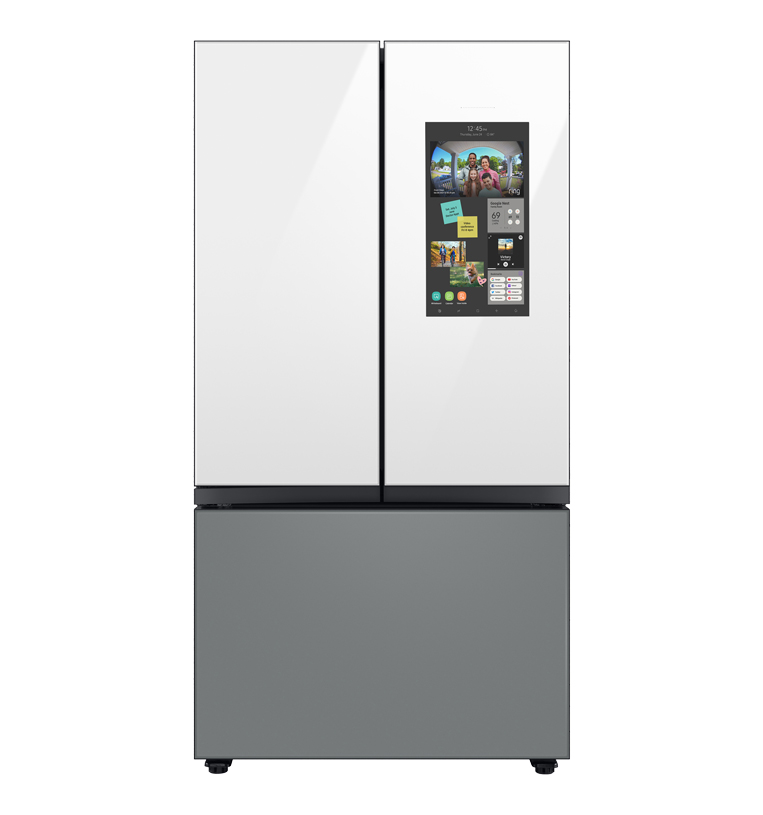
Maintenance & Care
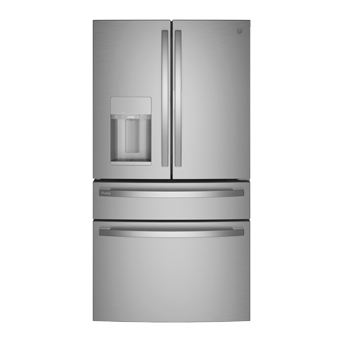
- Cleaning and sanitizing. Regular cleaning and sanitizing of your refrigerator can help prevent the growth of bacteria and keep your food safe. How often should you clean your fridge from Conn’s HomePlus? As often as you want — weekly, monthly, or whenever you notice the need. Here’s how to clean your refrigerator: First, take out any removable drawers and shelves. Let them warm up slightly, closer to room temperature. Then wipe those pieces as well as the fridge’s interior with warm, soapy water. Scrub dry with a fresh towel.
- Troubleshooting common problems. There are several common refrigerator problems. Noticing puddles of water? Try tightening the tubing. Hearing loud, unusual noises? Check the fan motor or try dusting your refrigerator coils. Ice maker not making ice? Be sure you’ve flipped the lever to the “on” position and check that there aren’t any blockages. Fridge door not closing? Wipe with a wet cloth to remove debris and check that the fridge is level. Remember, if it’s difficult to identify or solve an issue with DIY fridge repair methods, you may need to contact a professional repair person.
- Replacing parts and components. Certain parts and components of your refrigerator can wear out over time. Keep your fridge fully functional with our DIY refrigerator maintenance tips. If mineral deposits build up in your fridge’s water inlet valve, which supplies water to the refrigerator, it will need to be replaced. When fridge light bulbs go out, be sure to replace them with the same wattage as certain kinds deal better with temperature changes. Finally, the thermistor keeps track of the fridge’s temperature and can cause many problems if malfunctioning. This may be the refrigerator part that needs replacing the most.
- How to extend the lifespan of your refrigerator. To keep your fridge in peak shape for a long time, it’s important to practice refrigerator care and upkeep. Your refrigerator maintenance checklist should include: regularly cleaning it, avoiding overloading it, and ensuring that the door seals correctly. Refrigerators last on average for 15 years but can thrive well beyond that if taken excellent care of. Even maintaining the exterior of your refrigerator can help!
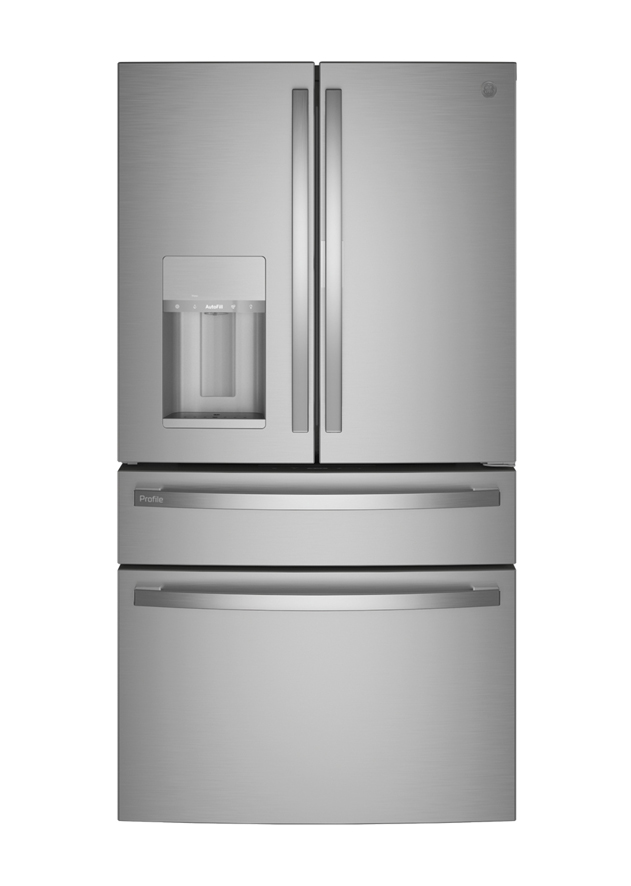
Purchasing & Installation
- Factors to consider when purchasing a refrigerator. When purchasing a refrigerator, it's essential to consider the size, capacity, energy efficiency, features, color, and your budget. Evaluating your needs and comparing refrigerator brands and models will help you make the best decision. Because Conn’s HomePlus carries a diverse array of options, it’s easy to find the right refrigerator for you. On top of that, we offer appliance financing that makes it easier to complete your kitchen space.
- Where to buy a refrigerator. Whether you’re shopping online or in store, Conn’s Home Plus provides an excellent selection of modern refrigerators. We have a variety of styles and features available — side-by-side refrigerators, refrigerators with French doors, counter-depth refrigerators, and even Wi-Fi enabled smart refrigerators. Our selection includes top brands like Samsung, LG, Whirlpool and more! Not sure how to choose the best refrigerator? Our easy-to-use online filters make it simple to narrow down your search.
- Delivery and installation options. Need your fridge fast? We offer next-day delivery or pick up today options. As for installing your refrigerator, you can choose to do it yourself or let Conn’s HomePlus make life easier with these delivery and installation services: remove and haul away old unit (1 for 1 for a fee), install and level new unit, connect braided water line purchased from Conn’s to cut off valve within sight of refrigerator, place shelves, purge water through door after connections are made, and test and demonstrate basic functions.
- DIY installation tips. If you choose to install your refrigerator yourself, it's important to have the necessary tools on hand and read the manufacturer's instructions carefully to learn how to prepare for refrigerator installation. Just be sure that the refrigerator is level and that the door seals properly to maintain a consistent temperature. Also, allow the refrigerator to settle for a few hours before plugging it in. Want to make sure your fridge is installed correctly? We offer professional refrigerator installation services.
Brands & Manufacturers
Brands & Manufacturers
Popular Refrigerator brands
Some of the most popular refrigerator brands at Conn’s HomePlus include LG refrigerators, Samsung refrigerators, GE refrigerators, and Frigidaire refrigerators. These top-rated refrigerator brands stand out for their mix of attractive styling, impressive functionality, reliability, energy efficiency, and affordability.
Features and benefits of each brand
We carry several innovative refrigerator brands, each with unique styles and attributes. LG refrigerators are known for their sleek designs, energy efficiency, and advanced technology. Samsung refrigerators have similar features, with a focus on innovative designs and flexible storage options. GE refrigerators are renowned for their reliability as well as features like customizable shelving and water filtration systems. Lastly, Frigidaire refrigerators are known for their stylish looks, user-friendly designs, and long-lasting durability.
Customer reviews and ratings
Each Conn’s product page features a section for customer reviews and images near the bottom. Be sure to check our refrigerator reviews and ratings for the fridges you’re interested in. These will help you get a sense of real user experiences with refrigerators before you buy. Trust us, customer feedback on refrigerators is incredibly valuable!
Warranty and customer support options
Many refrigerator brands offer warranties and customer support options to provide peace of mind and ensure customer satisfaction. These may be limited or full warranties for a certain period of time, often one year or more. And don’t forget that Conn’s HomePlus also offers protection plans to keep you covered.
French-door Refrigerators
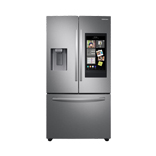
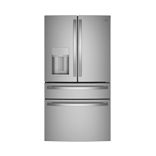
Features and benefits of French-door refrigerators
French-door refrigerators typically have two narrow doors that open outwards, providing easy access to both the refrigerator and freezer compartments. They also often feature customizable storage options, such as adjustable shelves and door bins, to accommodate various-sized food and drinks.
French door refrigerators offer plastic and glass adjustable shelves, crisper drawers with humidity control, door-within-door, and fingerprint-resistant finishes in stainless-steel, black stainless-steel, or traditional black. Choose a four-door refrigerator for better control over separate cooling zones to keep your food fresh with consistent temperatures. Icemakers, water dispensers, crisper drawers, door alarms, child locks and all the latest features provide conveniences you’ll love.
Size and capacity options
We carry a range of sizes and capacities to suit different needs. Whether you’re interested in a 20-cubic or 30-cubic-foot model, or a super-capacity refrigerator, we have you covered. Widths vary as we offer French-door refrigerators between 26 and 34 inches wide. Another thing to consider is if you want a counter-depth French-door refrigerator for the built-in look.
Energy efficiency ratings
French-door refrigerators are generally more energy-efficient than other types of refrigerators, thanks to features such as LED lighting and improved insulation. Several of our fridges are Energy Star certified, indicating that they meet strict energy efficiency guidelines.
Price ranges
Extremely affordable French door refrigerators cost under $1,200 while luxury French door refrigerators are priced at nearly $5,000. It all depends on the brand, size, and features. While they may be more expensive than other types of refrigerators initially, their customizable storage options and energy efficiency can help save money in the long run.
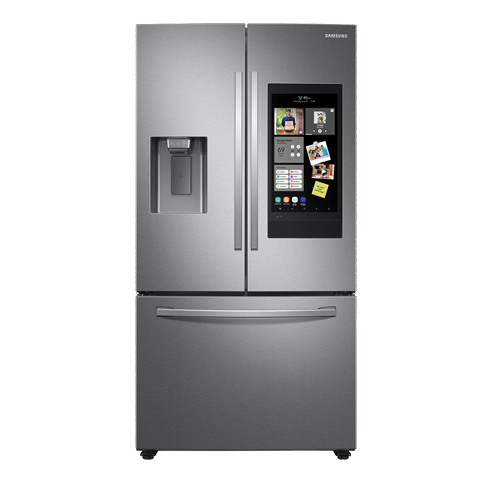
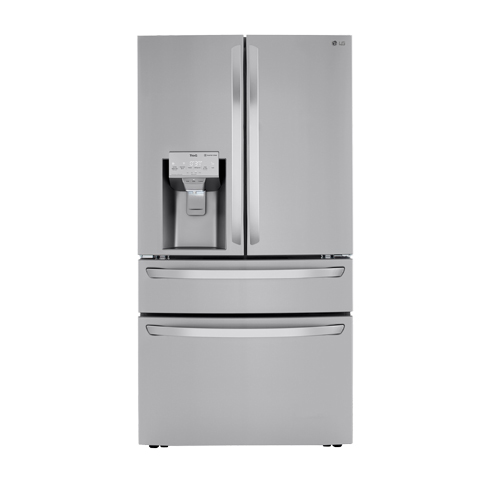
Side-by-side Refrigerators
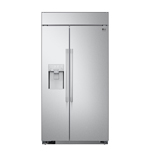
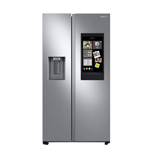
Features and benefits of side-by-side refrigerators
Boasting two vertical compartments, side-by-side fridges have one area for the fridge and the other for the freezer. These innovative refrigerators are well suited for families as well as spaces needing a slim fridge. Our quality side-by-side refrigerators provide plenty of options in size, style, color and more.
They are perfect for those who want to keep their frozen and refrigerated items organized and within easy reach. Many models include adjustable shelves, temperature-controlled drawers, and water and ice dispensers. Some of our luxury side-by-side refrigerators come with premium features such as built‑in deodorizing filters, beverages centers, and so much more.
Size and capacity options
This type of home refrigerator comes in a wide range of sizes and capacities to suit different needs. Conn’s HomePlus carries small side-by-side refrigerators with 18.8 cubic feet of capacity, high-capacity side-by-side refrigerators with up to 29 cubic feet of space, and ultra-wide fridges that are 42 inches across.
Energy efficiency ratings
We know that energy efficiency is important to our customers, which is why our side-by-side refrigerators are designed to be as energy-efficient as possible. Many models are Energy Star certified, helping you save money on your energy bills.
Price ranges of side-by-side refrigerators
We provide a range of prices to fit any budget, with prices starting at around $1,000 and going up to $2,800 or more for side-by-side refrigerators with smart features.

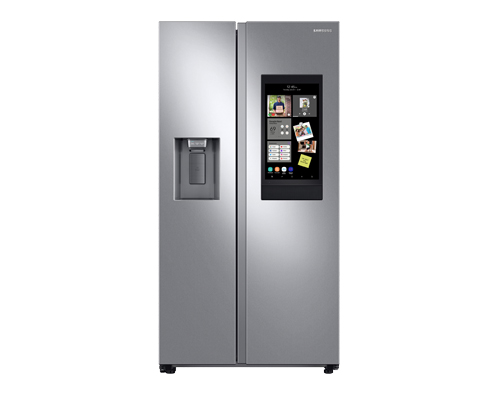
Top Freezer Refrigerators
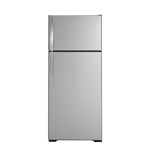
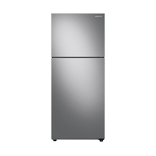
Features and benefits of top-freezer refrigerators
Top-freezer refrigerators have a freezer compartment on top and a larger refrigerator compartment below. Courtesy of this fridge type’s spacious freezer on top, it provides lots of room for storage. They come in simple, straightforward designs and are often more affordable than other types of refrigerators.
Many top-freezer fridges from Conn’s include features such as LED lighting, frost-free freezer compartments, lots of storage space with adjustable glass shelves, humidity-controlled crisper drawers, and door shelves. One last advantage of top-mount refrigerators is they often have wider doors and bigger storage compartments.
Size and capacity options
Top-freezer refrigerators come in a range of sizes and capacities to suit different needs. Standard models typically have a capacity of around 18 to 22 cubic feet. However, Conn’s HomePlus carries small top-freezer refrigerators with 9.8 cubic feet of capacity and large top-mount refrigerators with up to 24 cubic feet of space.
Energy efficiency ratings
Top-freezer refrigerators are generally more energy-efficient than other types of refrigerators, thanks to their simpler design and improved insulation. Many models are Energy Star certified, indicating that they meet strict energy efficiency guidelines.
Price ranges
Top-freezer refrigerators, also known as top-mount refrigerators, are the most common and affordable refrigerators for home use. Budget-friendly top-freezer fridges cost under $500 while premium top-freezer refrigerators are nearly $1,100.
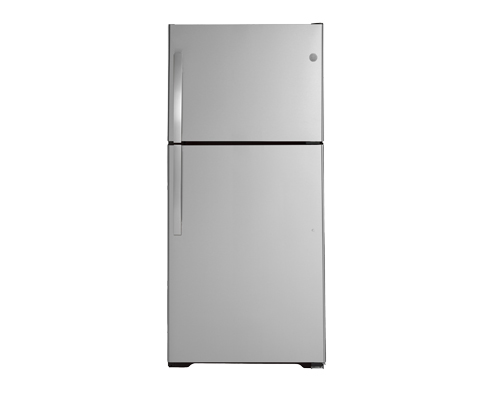
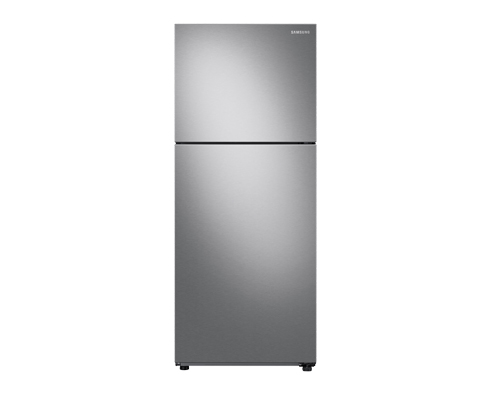
Bottom Freezer Refrigerators
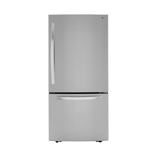
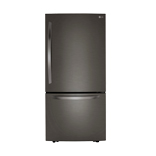
Features and benefits of bottom-freezer refrigerators
This type of home refrigerator tends to have a bigger freezer compartment to store large frozen foods, making it easier to access frozen items. From convertible drawers and full‑width freezer compartments to LED lighting and AutoFill water capabilities, there are plenty or details that make our bottom-freezer fridges stand out.
Also, this design keeps fresh items at eye level. And it’s great for those with kids! Choose between fingerprint resistant, stainless steel, and black stainless-steel finishes, as well as numerous sizes and styles.
Size and capacity options
Bottom-mount refrigerators are usually more spacious than top-mount refrigerators. Of course, they come in a variety of sizes and capacities. Conn’s HomePlus carries small bottom-freezer refrigerators with 11.3 cubic feet of capacity and large bottom-freezer refrigerators with nearly 28 cubic feet of space.
Energy efficiency ratings
Our bottom-freezer refrigerators are designed to be energy-efficient, with many models acquiring Energy Star certification. This means that they meet strict energy efficiency guidelines, and help you save money on your energy bills.
Price ranges of bottom-freezer refrigerators
Also known as bottom-mount refrigerators, this type of fridge is competitively priced. Our bottom-freezer fridge prices range from around $1,400 to $4,000 or more, depending on the brand, size, and features.
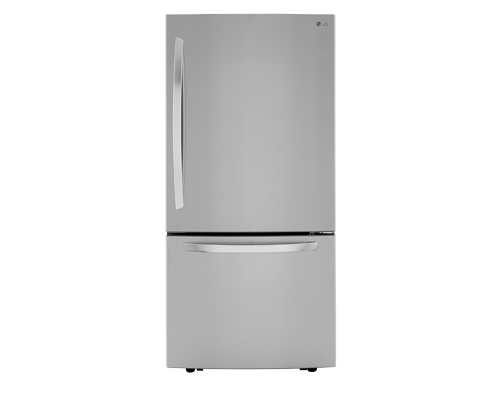
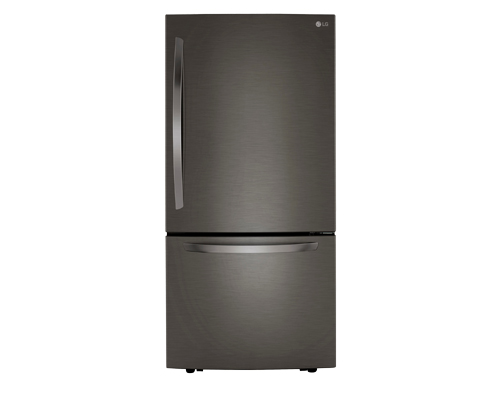
Compact Refrigerators
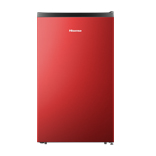
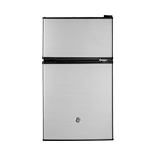
Features and benefits of compact refrigerators
Mini fridges are designed to provide all the benefits of a full-sized refrigerator, but in a smaller package. These space-saving fridges are well-suited for offices, apartments, and dorm rooms. Or a bit of extra fridge and freezer space in addition to your everyday refrigerator.
Some compact mini-refrigerators have a shelf-type freezer compartment built right into the unit, while others have a separate freezer compartment. Many are equipped with adjustable shelves, vegetable crispers, temperature control settings, and features like a reversible door and built-in lock. From small to tall mini-fridges, the options to fit your small space are endless. Lastly, many models come with adjustable feet to make sure your compact mini-fridge is level.
Size and capacity options
Surprisingly, mini refrigerators come in several sizes, capacities, and styles. From modern compact refrigerators to beverage and wine fridges, Conn’s HomePlus carries a wide variety. Our smallest mini fridges offer 3.1 cubic feet of capacity, while high-capacity compact refrigerators have up to 11 cubic feet of space.
Energy efficiency ratings
Due to their small size, compact fridges are naturally energy efficient. Many models from Conn’s are also Energy Star certified, giving you peace of mind and helping you save money on your bills.
Price ranges of bottom-freezer refrigerators
Our mini fridges are available in a variety of price points, depending on size, style, and brand. Prices start around $300 for our most basic mini fridges and are about $1,400 for high-capacity wine fridges.
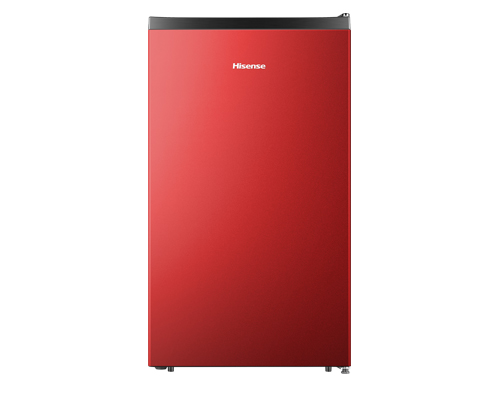

Energy Efficiency Ratings
- Energy Star ratings. The Energy Star program is a government-backed initiative that promotes energy-efficient products. Energy Star-rated refrigerators can save you money on your electricity bills while reducing your carbon footprint.These energy-efficient refrigerators have received an Energy Star certification, meaning that they are “about 9 percent more energy efficient than models that meet the federal minimum energy efficiency standard.”
- Annual energy consumption estimates. The Department of Energy provides estimates of the annual energy consumption of refrigerators. This information can help you compare different models and choose the most energy-efficient option for your needs. A normal home refrigerator will use around 500 watts of electricity, which would be about 1460 kWh each year. For comparison, an Energy Star-rated fridge may only use 350 kWh annually. That’s a big difference!
- How to compare energy efficiency ratings. When comparing energy efficiency ratings, look for the fridge’s Energy Guide label that displays the estimated annual energy consumption and the Energy Star certification. This energy guide label will tell you the estimated annual electricity use in kilowatt hours, or kWh. Also, consider the size and capacity of the refrigerator, as larger models generally use more energy. Other features, such as adjustable temperature control and smart technologies, can also affect energy efficiency.
Defrost options
- Manual defrost. This is the most basic and traditional defrost option for refrigerators, where you manually turn off your refrigerator and wait for the ice to melt. While this is the most cost-effective defrost option, it requires regular maintenance and can be time-consuming.
- Automatic defrost. Defrosting your refrigerator can be a tedious task. Fortunately, automatic defrost fridges have a timer that periodically turns off the cooling system to allow the ice to melt. This is a convenient option that saves time and effort, but may lead to slightly higher energy bills.
- Frost-free defrost. Refrigerators with frost-free defrost systems use a heating element to melt any ice build-up in the freezer compartment. This is the most advanced defrost option. While it requires minimal maintenance, it may also be more expensive than other options.
- How to choose the right defrost option for your needs. It’s important to prevent the build-up of ice crystals inside your fridge. That’s why Conn’s HomePlus stocks refrigerators with different defrost options. When choosing the right defrost option for you, think about the size of your household, the frequency of use, and your budget. If you have a large family, a frost-free defrost option may be the most efficient option. On the other hand, if you have a smaller household, a manual or automatic defrost option may be sufficient.
Temperature Controls
- Dial controls. Refrigerators with dial controls offer the simplest form of temperature control. In short, it’s easy to understand and use. That’s because these fridges feature a basic dial, letting you adjust the temperature to your desired level. It’s the most user-friendly refrigerator while also cost-effective.
- Digital controls. Want more precise temperature control? Opt for a refrigerator with digital controls. These fridges boast a digital display, allowing you to see the exact temperature of your refrigerator or freezer compartments and easily update it. Digital controls may also include additional features such as temperature alarms and door open alerts.
- Multi-zone temperature controls. In the most modern refrigerators, you’ll often find multi-zone controls, which let you set different temperatures for distinct sections of your fridge. This is useful for storing a variety of food that may require different temperature ranges, such as fruits and vegetables, meat, and dairy products. Precise temperature controls mean your food stays fresher for longer.
- How to set and adjust temperature controls. The first step to take is referring to your refrigerator owner's manual for specific instructions. Next, simply locate the appropriate knob or panel inside your fridge where you can increase or decrease your appliance’s temperature. In general, the recommended temperature range for refrigerators is between 34 and 40 degrees Fahrenheit, and for freezers, it's between 0 and 5 degrees Fahrenheit. You can adjust the temperature controls by using the dial or digital display, and for multi-zone temperature controls, you can set different temperatures for each zone.
Cleaning & Sanitizing
How to clean refrigerator interiors and exteriors.
- Unplug your refrigerator and take out all contents from inside it. That includes any removable drawers and shelves.
- Use a mild detergent or baking soda mixed with water to clean the interior surfaces, including remaining shelves, drawers, and walls. Avoid using abrasive cleaners that can scratch the surface.
- Next, clean the exterior surfaces with a soft, damp cloth and warm, soapy water.
- Finally, dry all surfaces thoroughly with a fresh towel before plugging the refrigerator back in and replacing the food.
Best practices for sanitizing refrigerators
Here are some quick tips for sanitizing a fridge. Use a solution of one part vinegar to three parts water to clean the interior surfaces of your fridge. Spray a disinfectant or wipe clean the exterior surfaces, including the handles and door seals. Don’t forget to clean high-touch areas, such as drawer handles, dispenser buttons, and more.
Cleaning and sanitizing frequency recommendations
Cleaning and sanitizing frequency recommendations. Regular cleaning and sanitizing of your refrigerator can help prevent the growth of bacteria and keep your food safe. How often should you clean your fridge from Conn’s HomePlus? Once a month is recommended. Of course, if you notice spills or stains, clean them up as soon as possible to prevent bacteria. And if someone in your home is sick, be sure to focus on sanitizing the refrigerator’s high-touch areas, like the door handles.
Troubleshooting Common Problems
Refrigerator not cooling
If your fridge is not cooling, the first thing to check is the temperature setting. Make sure it’s set correctly and adjust it if necessary. If the temperature is still too warm, check the condenser coils for dust and debris buildup. Clean the coils with a vacuum or brush and see if this resolves the issue.
Refrigerator making strange noises
Strange noises coming from the refrigerator can be caused by a variety of factors. If the noise is coming from the back of the fridge, it may be the compressor or fan motor. Try cleaning the coils first to see if that helps. If the noise persists, it may be time to call in a professional.
Refrigerator leaking water
A leaking refrigerator can be caused by a faulty water supply line, clogged drain line, or damaged door gasket. Check the supply and drain lines for any visible damage or blockages. You can also try tightening the tubing. If this doesn’t solve the issue, call in a technician to assess and repair the problem.
How to diagnose and fix common refrigerator problems
Remember, regular maintenance and cleaning can help prevent many common refrigerator problems. Keep the condenser coils clean, check and replace the door gasket if needed, and be sure to defrost the freezer when ice buildup becomes excessive. With proper care and maintenance, your home’s fridge should provide reliable performance for years to come. However, if it’s difficult to identify or solve any issue with DIY fridge repair methods, you may need to contact a professional repair person.
Factors to consider when purchasing a refrigerator
- Size and capacity needs. Think about how much food you typically store in your fridge and freezer, and how many people are in your home. This will help you determine the size and capacity you need. Whether you need a mini fridge for your man cave or a high-capacity refrigerator for your family of seven, we have the right fridge for you.
- Energy efficiency ratings. Be sure to check out the energy efficiency ratings of different fridges. Look for Energy Star certified refrigerators, which can help you save money on your energy bills and reduce your carbon footprint. Conn’s has a lot of energy-efficient fridges to choose from!
- Style and design preferences. Conn’s gives you plenty of fridge styles to choose from: top-freezer, bottom-freezer, side-by-side, French-door, and compact refrigerators. Consider which style fits your kitchen design and personal preferences. Would you prefer a counter-depth fridge or a standard installation depth? Is there a color or finish that speaks to you? Is the refrigerator brand a big part of your decision? There’s a lot to think about before choosing a refrigerator.
- Refrigerator price range. Determine your budget and look for refrigerators that fit within that range. Keep in mind that more expensive models may have additional features and benefits, but there are also affordable options that still offer quality and efficiency. Because Conn’s HomePlus carries a diverse array of options, it’s easy to find the perfect refrigerator. On top of that, we offer appliance financing that makes it easier to complete your kitchen space.
FAQs
-
1. How does a refrigerator work?
A refrigerator works on the principle of removing heat from the inside of the unit to keep your food and drinks cool. It does this through a refrigeration cycle that involves a refrigerant, a compressor, coils, and an expansion valve. The refrigerant absorbs heat inside the fridge and circulates it outside through the coils, where it releases the heat.
Newer refrigerators come with state-of-the-art technologies, offering customization opportunities and unique features such as programmable temperatures, rapid cooling, and smart connectivity. Explore our wide range of high-quality refrigerators to find models with these advanced features.
-
2. Which refrigerators are the most energy efficient?
Energy-efficient refrigerators are designed to use less electricity while still providing top-notch performance. Look for the ENERGY STAR certification, as these models meet strict guidelines set by the U.S. Department of Energy and the Environmental Protection Agency. Explore our selection of energy-efficient refrigerators with ENERGY STAR certification.
-
3. How much power does the average refrigerator use?
The average refrigerator uses anywhere from 100-800 watts of electricity, depending on size, type, and efficiency level. An energy-efficient model may consume around 300-400 watts, while older models might use considerably more.
-
4. How often should a refrigerator be defrosted?
The frequency of defrosting your refrigerator depends on the type of unit and how quickly frost builds up. Manual defrost refrigerators should be defrosted whenever the frost layer reaches a quarter-inch thick, which could be anywhere from annually to multiple times a year. For frost-free or automatic defrost models, manual defrosting is not required, as they are designed to manage frost on their own.
-
5. What are the most common refrigerator problems?
Some of the most common refrigerator problems include inadequate cooling, strange noises, water leakage, and issues with the ice maker or water dispenser. If you're experiencing any of these issues or others, Conn's HomePlus is here to help. You can chat with an Associate for immediate assistance, contact us for more in-depth queries, or request service repairs if needed. Our team is dedicated to ensuring your refrigerator runs smoothly and efficiently.


